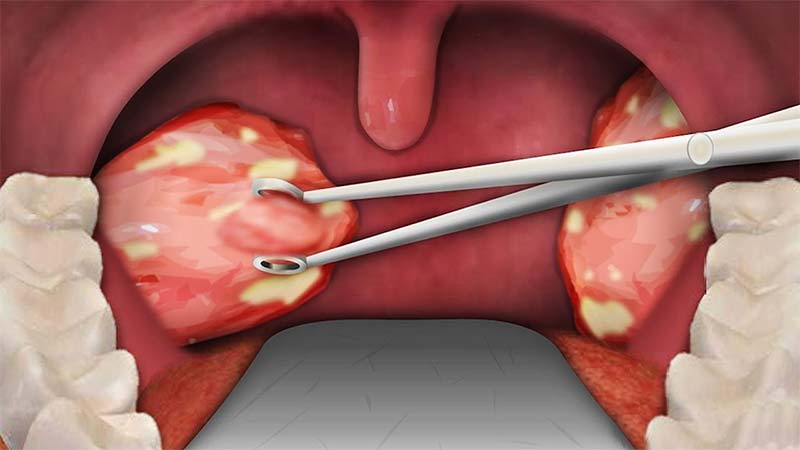Tonsillectomy and adenoidectomy are surgical procedures performed to remove the tonsils and adenoids.
The adenoids are a pair of midline glands that lie behind the nasal cavity (in the nasopharynx) and, that like the tonsils, play a minor role in the immune system. By the same token, like the tonsils, removal of these structures does not impact the ability to heal or fight infection. The adenoids typically enlarge up until about the age of five and then begin to regress. Therefore most teenagers and adults have very small or rudimentary adenoid pads.
The adenoids play their role in the immune system by trapping bacteria and other invaders and helping the body develop defenses against them. Although this is true, this trapping of bacteria and viruses and the swelling that ensues can have a negative impact on a child's ability to breathe, clear secretions and can colonize the middle ear (via the Eustachian tube that drains from the middle ear to the throat) and/or sinuses.
Because of this association, adenoids have been shown in some children to play a role in recurrent ear and sinus infections. While most pediatric sinus problems can be handled with medicines, occasionally these do not work and surgery is necessary. Because of the adenoids role in colonizing the sinuses and blocking the nasal airway, removal of the adenoids is usually the initial surgical procedure performed in children with chronic sinus disease. Similarly, because of the potential for the adenoids to colonize the middle ear in children over 3 who are undergoing ear tubes, or for those patients getting a second set of ear tubes, the adenoids are typically removed.
Removal of the adenoids is typically done as an outpatient and takes anywhere from 15 to 30 minutes. Unlike tonsillectomy the pain is typically quite low and most children do well with Tylenol only. Likewise, the risk of bleeding complications after removal of the adenoids is also quite small. The most serious potential complications of adenoidectomy are very rare and include injury to the Eustachian tube, and narrowing of the upper part of the throat leading to problems with speech and refluxing of liquids to the back of the nose. Although these rare complications can occur, removal of the adenoids is a relatively simple and extremely safe procedure to perform.
If you have more questions about removal of the adenoids or about pediatric sinus or ear disease please feel free to contact one of our specialists.
Tonsillectomy recovery is painful for children and usually even worse for adults. Adults should plan on missing up to two weeks of work, and children, about one week of school. During your tonsillectomy recovery, care should be taken to avoid strenuous activity as it may increase pain and can also increase the risk of bleeding.
Here are a few tonsillectomy recovery tips that can help you have a smoother recovery after your tonsillectomy
